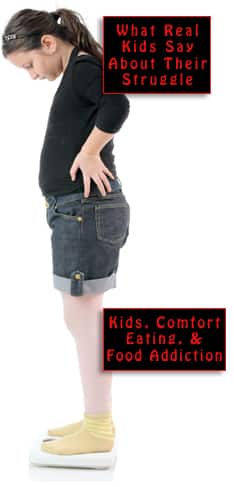
Wherever people are overwhelmed by cravings, and afflicted by disorders like binge eating and stress eating, gigantic corporations stand by, ready to help them commit slow suicide. The documentary “Junk food, sugar and additives — The dark side of the food industry” contains some pretty disturbing interviews, including one with a patient who talks about eating until it is physically impossible to stuff any more in.
For someone with a problem, the first few bites are great; then the pleasure diminishes, yet they continue to eat, and feel shame about it, and then eat some more to drown the shame. It is not a question of willpower, but a matter of manipulation. In a classic bait-and-switch scam, processed foods promise happiness, but deliver a bowl full of sugar, fat, and salt.
The work mentions interesting animal experiments. Everyone has heard of the laboratory rats addicted to cocaine, who made shocking news for a while — but surprisingly, not many people remember the subsequent experiments that showed how rats like sugar even better than blow.
Don’t label me!
The previous post mentions the 56 different terms for substances, all basically sugar, that food manufacturers use when composing informational package labels.
This is not the only example of wordplay. The investigation nailed the many cute euphemisms that companies use for addictive potential, like “moreishness” and “crave-ability.” They call extreme customers “heavy users,” but in other contexts, that is a synonym for addicts. These heavy users are the 20% of buyers who eat 80% of the products, and who bring in 80% of the revenue. In other words, the big money comes from enticing the most vulnerable consumers into dependency.
Say what?
But even though ultra-processing makes food act like nicotine, alcohol, or cocaine, try getting Nestle to admit that people become addicted. It will never happen. In this documentary, an expert talks about the mechanism behind addiction. “We see changes in the brain.” Dr. Pretlow suggests that these observed brain changes might be from the displacement mechanism developing into overeating, with junk food being the cue or trigger. Another thought is that it makes sense to wonder which is “pulling the trigger,” the substance or the psyche, because no substance would be addictive if it did not satisfy a psychological need.
South of the border
In Mexico, three-quarters (or around 75%) of adults are overweight or obese, and everyone (from CEOs to the customers themselves) has become adept at rationalizing their excuses for this tragedy. The nation’s 1994 trade agreements with the U.S. and Canada caused untrammeled availability of products. Since then, because of the huge percentage of deaths due to poor nutrition (a euphemism for the sugar-fat-salt combo), the government has become involved. Some products sold there have reduced their sugar content, and advertising for children can no longer utilize cartoon animals. This is a blow to the industry, which is well aware that human eating habits are formed before the age of 10.
Over 50 countries now tax sugary drinks, but not Nestle’s home country Switzerland, where 42% of adults are overweight and 10% are obese. Even the World Bank recommends this kind of tax, but members of the Swiss parliament refuse to even be interviewed about it.
Much of this documentary draws from the work of Michael Moss, author of Hooked, who makes a case that substances marketed as food may be more problematic than tobacco, alcohol, and even some drugs.
Here are the Michael Moss references in Childhood Obesity News:
“One Food Addiction Factor, Continued Twice”
“One Food Addiction Factor, Continued Yet Again”
“They Knew It Was Bad”
“Big Food and the One-Two Punch”
“The Unpleasant Secrets of Coke”
“Our Own Mouths Betray Us”
Your responses and feedback are welcome!
Source: “Junk Food, Sugar and Additives — The Dark Side of the Food Industry,” YouTube.com, July 2023
Image by Bycroft Boy/CC BY 2.0

 FAQs and Media Requests:
FAQs and Media Requests: 











